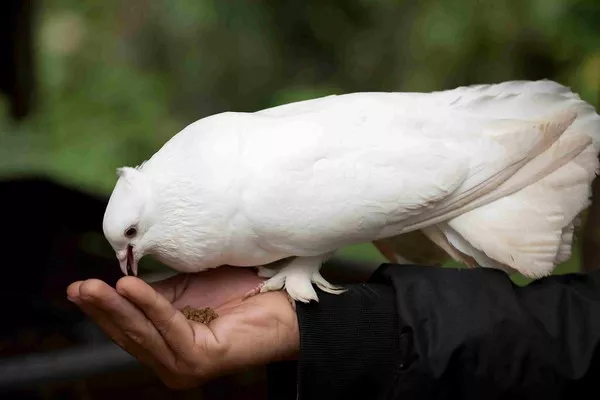Bolivian Rams, scientifically known as Mikrogeophagus altispinosus, are a type of freshwater cichlid native to South America. Known for their vibrant colors, peaceful nature, and fascinating behavior, these fish have become a popular choice among aquarium enthusiasts. Understanding the size of Bolivian Rams, along with their living conditions, feeding habits, and behavior, is crucial for any aquarist who wishes to provide the best care for these beautiful creatures.
In this article, we’ll explore how big Bolivian Rams get, their physical characteristics, their natural habitat, and what you can do to help them thrive in your aquarium.
Overview of the Bolivian Ram
Bolivian Rams are part of the Cichlidae family and are closely related to the more commonly known German Blue Rams. However, unlike the German Blue Ram, the Bolivian Ram is often considered to be hardier and easier to care for, making it a great choice for both beginner and experienced fishkeepers.
They are often admired for their gentle temperament and striking appearance. Bolivian Rams display a variety of colors, including shades of yellow, blue, and red. Males tend to have more vivid colors, especially during breeding periods, while females are generally smaller and less colorful.
These fish are typically found in slow-moving rivers, streams, and lakes in their native habitats in Bolivia and Brazil. They are often spotted among submerged vegetation, where they seek shelter from predators and enjoy the safety of their natural environment.
How Big Do Bolivian Rams Get?
Bolivian Rams, while not the largest species of cichlid, can still reach a moderate size in comparison to other freshwater aquarium fish.
- Size Range: On average, adult Bolivian Rams grow to be about 3 to 4 inches (7.5 to 10 cm) in length.
- Males vs. Females: Male Bolivian Rams tend to be slightly larger than females, with males sometimes reaching 4 inches (10 cm), while females typically max out at around 3 inches (7.5 cm). The difference in size can be most noticeable when they are in their breeding coloration, with males exhibiting brighter, more intense colors.
Although they are not particularly large compared to other species, their size is still substantial enough to create a noticeable presence in a well-planted aquarium. This size is ideal for aquarium owners who want a fish that is not too small and yet still offers a visual impact.
Factors Influencing the Size of Bolivian Rams
Several factors can influence how large Bolivian Rams grow, including:
Genetics
Genetics play a key role in the size of any fish species. Different lineages or breeding practices can affect the final size of the fish. Bolivian Rams bred in captivity may have slight differences in size compared to those in the wild, especially if selective breeding has been used to emphasize certain traits.
Diet
A well-balanced diet is essential for healthy growth. Bolivian Rams require a diet rich in protein, such as high-quality fish pellets, frozen foods like brine shrimp, and live food options. Offering a varied and nutritious diet will help ensure they reach their full size potential.
Tank Conditions
The environment in which Bolivian Rams are kept can have a significant impact on their growth. The size of the tank, water quality, temperature, and the presence of hiding spots can all influence their health and growth rate.
- Water Temperature: Bolivian Rams prefer warmer water, ideally between 75°F and 80°F (24°C to 27°C). This range promotes optimal metabolic activity and growth.
- Water Quality: Good water quality is crucial for any aquarium fish. Bolivian Rams are particularly sensitive to poor water conditions, so regular water changes and a good filtration system are essential. Elevated levels of ammonia, nitrites, and nitrates can stunt their growth and lead to health issues.
- Tank Size: While Bolivian Rams are relatively small fish, they still require ample space. A tank size of at least 30 gallons (114 liters) is recommended for a small group of Rams. A larger tank will allow the fish to grow and establish territories, promoting healthier and more natural behavior.
Social Environment
Bolivian Rams are peaceful and social fish. Keeping them in a group can promote better growth, as they are more likely to thrive when they feel safe and secure. A single Bolivian Ram may become stressed and not grow as large as those in a well-established group.
However, they should not be kept with overly aggressive fish, as this can inhibit their growth and cause stress. When kept with compatible species, like tetras or peaceful livebearers, they will feel more comfortable and can grow to their full size.
Bolivian Ram Growth Timeline
Bolivian Rams grow relatively slowly compared to some other aquarium species. Here’s a rough timeline of their growth stages:
- Juvenile Stage (0-6 months): At birth, Bolivian Rams are tiny, measuring only about 0.5 inches (1.3 cm) in length. During the first 6 months, they will experience the most rapid growth. By the end of this period, they may have reached 1.5 inches (4 cm).
- Young Adult (6-12 months): Between 6 to 12 months, Bolivian Rams continue to grow at a steady pace, typically reaching around 2 to 2.5 inches (5 to 6 cm) by the end of their first year.
- Full Adult Size (1-2 years): After around one to two years of age, Bolivian Rams will have reached their full size of about 3 to 4 inches (7.5 to 10 cm).
During their growth, Bolivian Rams may also undergo several changes in color, especially during breeding periods when the males’ colors become more vivid. These color changes are a natural part of their development and often indicate a healthy and mature fish.
Health Considerations for Bolivian Rams
While size is an important factor to consider, the overall health of the fish is equally crucial for their well-being. Several health concerns could affect their growth, including:
Poor Water Quality
As mentioned earlier, Bolivian Rams are particularly sensitive to poor water quality. Regular maintenance of the aquarium, including water changes and ensuring the proper levels of pH, ammonia, nitrites, and nitrates, will help the fish grow properly.
Overcrowding
Although Bolivian Rams are peaceful and social, overcrowding in an aquarium can lead to stress and stunted growth. It’s essential to provide enough space for each fish and avoid keeping too many in one tank. Overcrowding can also lead to aggression, which can negatively impact the fish’s health.
Inadequate Diet
Feeding Bolivian Rams a varied and nutritious diet will support their growth and prevent malnutrition. If they are not provided with a balanced diet, they may grow more slowly or develop health problems.
Disease
Bolivian Rams are susceptible to certain diseases, such as Ich (white spot disease), fin rot, and parasites. Keeping the aquarium clean, ensuring water quality, and quarantining new fish before introducing them to the tank can help prevent the spread of diseases that might stunt their growth.
Final Thoughts
In conclusion, Bolivian Rams are relatively small cichlids, with adults typically reaching a size of 3 to 4 inches (7.5 to 10 cm). Their size, combined with their vibrant colors and peaceful nature, makes them an excellent choice for aquarists seeking an attractive and manageable fish.
To help Bolivian Rams grow to their full potential, it’s important to provide them with optimal water conditions, a varied diet, and enough space to thrive. Regular tank maintenance and careful attention to their needs will ensure that your Bolivian Rams reach their maximum size and live a healthy, long life.
Their size may not make them one of the largest aquarium fish, but their beauty and behavior more than make up for it. With proper care, Bolivian Rams will remain a stunning and peaceful addition to any tank, growing to their full size and displaying their captivating colors for many years.
Related Topics:






















